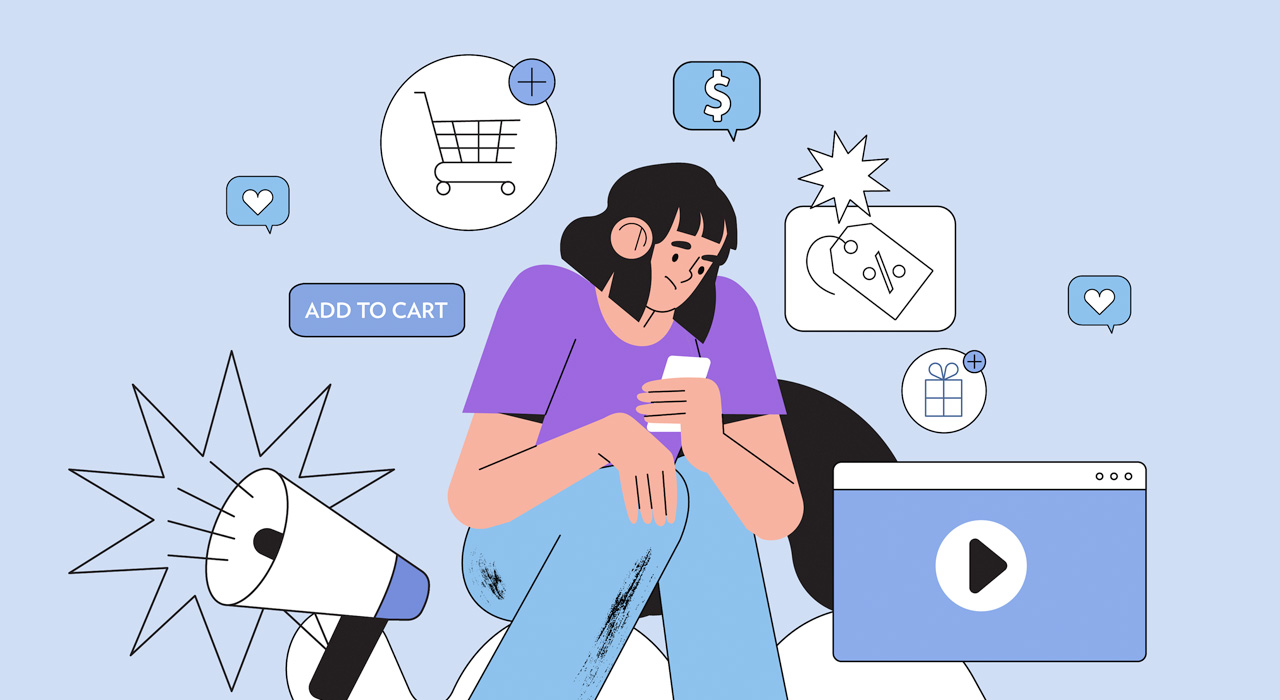
Digital marketing goals to attach with various audiences, and an more and more necessary a part of that variety contains neurodivergent customers. Neurodivergence encompasses circumstances equivalent to autism, ADHD, dyslexia, and different cognitive variations. These people might expertise the world otherwise, and conventional advertising and marketing methods might not all the time resonate with or be accessible to them.
Creating inclusive digital marketing strategies means recognizing and addressing the wants of neurodivergent customers. This not solely broadens your viewers but in addition fosters a extra inclusive and supportive model picture.
On this article, we’ll discover actionable methods to make your digital marketing more inclusive for neurodivergent customers.
Understanding Neurodivergence and Its Affect on Digital Experiences
Neurodivergence refers to variations within the human mind relating to sociability, studying, consideration, temper, and different psychological capabilities. Frequent types of neurodivergence embrace:
- Autism Spectrum Dysfunction (ASD)
- Consideration-Deficit/Hyperactivity Dysfunction (ADHD)
- Dyslexia
- Dyspraxia
- Tourette Syndrome
Neurodivergent people might course of info otherwise, which may impression how they work together with digital content material. For instance, an individual with ADHD would possibly discover it tough to deal with prolonged textual content, whereas somebody with autism could be delicate to sure colours or discover it difficult to navigate a cluttered web site.
By understanding these variations, entrepreneurs can create content material and experiences which might be extra accessible and pleasant for neurodivergent customers.
Simplify and Construction Content material
Content material that’s clear, concise, and well-structured is simpler for everybody to digest, together with neurodivergent people.
Use Clear Language
- Keep away from Jargon: Use plain language and keep away from industry-specific jargon that may confuse or overwhelm some readers.
- Quick Sentences: Break info into brief, manageable sentences to assist preserve the reader’s consideration and comprehension.
Break Up Textual content with Headings and Bullet Factors
- Headings: Use clear and descriptive headings to interrupt up content material, making it simpler to navigate.
- Bullet Factors: Current key info in bullet factors or numbered lists to boost readability and permit readers to scan for necessary particulars.
Present Summaries
- Abstract Sections: Embrace temporary summaries firstly of articles, weblog posts, or lengthy emails. This permits neurodivergent customers to rapidly perceive the content material’s function and determine in the event that they wish to learn additional.
Contemplate Visible Design and Format
The visible design of your digital content material performs a major position in its accessibility and inclusivity. For neurodivergent customers, sure design decisions can both facilitate or hinder their interplay along with your content material.
Use Constant and Predictable Layouts
- Consistency: Be certain that your web site or app has a constant structure throughout totally different pages. This helps customers know what to anticipate and reduces cognitive load.
- Predictable Navigation: Create a predictable navigation construction, with menus and hyperlinks in acquainted locations. This aids customers find what they want with out frustration.
Go for Calm and Impartial Shade Schemes
- Keep away from Overstimulation: Neurodivergent people, notably these with autism, could also be delicate to shiny colours or high-contrast patterns. Use calm, impartial shade schemes which might be much less prone to trigger sensory overload.
- Customizable Interfaces: The place doable, permit customers to customise the interface to go well with their preferences, equivalent to adjusting distinction, font dimension, or shade schemes.
Reduce Muddle
- Clear Design: Hold your designs clear and uncluttered. A minimalist method helps customers deal with the important content material with out being distracted by pointless parts.
- Whitespace: Use ample whitespace to present content material room to breathe, making it simpler to learn and fewer overwhelming.
Improve Multimedia Accessibility
Multimedia content material, together with movies, infographics, and interactive parts, may be notably partaking however have to be made accessible to neurodivergent customers.
Present Transcripts and Captions
- Transcripts: Provide textual content transcripts for audio content material and detailed descriptions for visible content material. That is helpful for customers who course of info higher by way of studying than listening.
- Captions: Embrace captions for all video content material. Captions not solely assist these with listening to impairments but in addition help customers who might battle to course of auditory info.
Use Alt Textual content for Photographs
- Descriptive Alt Textual content: Be certain that all pictures, particularly these containing info, have descriptive alt textual content. This helps neurodivergent customers who might depend on display screen readers to grasp visible content material.
- Keep away from Sensory Overload: When utilizing animations or GIFs, be aware of their impression. Quickly altering or flashing pictures may be overwhelming for some neurodivergent people.
Present A number of Content material Codecs
- Numerous Codecs: Provide content material in varied codecs—textual content, video, audio, and interactive parts—to cater to totally different studying types and preferences. Neurodivergent customers might choose one format over one other, so offering choices will increase accessibility.
Implement Inclusive Communication Methods
The way you talk along with your viewers, together with the tone, fashion, and frequency of your messages, can considerably impression neurodivergent customers.
Use a Pleasant and Understanding Tone
- Empathy: Talk in a tone that’s pleasant, empathetic, and understanding. Keep away from overly formal language, which can be perceived as intimidating or off-putting.
- Direct Communication: Be direct and clear in your messaging. Keep away from obscure statements or implied meanings that could possibly be complicated.
Respect Person Preferences
- E-mail Frequency: Be aware of the frequency of your e-mail communications. Sending too many emails in a brief interval can overwhelm neurodivergent people, notably these with ADHD or anxiousness.
- Decide-Out Choices: All the time present easy-to-find opt-out choices in your communications. This offers customers management over the content material they obtain, lowering the danger of overstimulation.
Present Clear Directions
- Step-by-Step Guides: When asking customers to finish a process, equivalent to filling out a type or making a purchase order, present clear, step-by-step directions. This minimizes confusion and ensures that each one customers can full the duty with out frustration.
- Keep away from Ambiguity: Be specific in your directions and keep away from ambiguous language. For instance, as an alternative of claiming “quickly,” present a particular time-frame, like “throughout the subsequent 24 hours.”
Prioritize Usability and Accessibility in Net Design
Net accessibility is essential for creating an inclusive expertise for all customers, together with those that are neurodivergent.
Implement Net Accessibility Requirements
- WCAG Compliance: Be certain that your web site complies with the Net Content material Accessibility Tips (WCAG). These tips present a framework for making digital content material accessible to folks with disabilities, together with cognitive and neurological variations.
- Accessible Kinds: Be sure that kinds in your web site are accessible, with clear labels, directions, and error messages. That is notably necessary for neurodivergent customers who might battle with advanced kinds.
Check for Usability
- Person Testing: Conduct usability testing with neurodivergent people to determine any limitations they could encounter. This helps you make knowledgeable selections about mandatory design changes.
- Iterative Design: Use suggestions from usability testing to make iterative enhancements to your web site, guaranteeing that it stays accessible and user-friendly for all.
Assist Keyboard Navigation
- Keyboard Accessibility: Be certain that your web site is totally navigable utilizing solely a keyboard. That is necessary for customers with motor impairments in addition to those that choose keyboard shortcuts over a mouse.
- Focus Indicators: Embrace seen focus indicators for interactive parts like hyperlinks, buttons, and type fields. This helps customers hold monitor of the place they’re on the web page.
Foster a Tradition of Inclusion
Inclusivity needs to be a core worth of your model, mirrored in all elements of your advertising and marketing technique.
Educate Your Group
- Coaching Applications: Present coaching to your advertising and marketing group on neurodiversity and inclusive practices. This ensures that everybody understands the significance of inclusivity and is aware of learn how to implement it successfully.
- Keep Knowledgeable: Encourage your group to remain knowledgeable concerning the newest developments in neurodiversity and accessibility. This lets you frequently refine your methods and preserve a excessive degree of inclusivity.
Interact with Neurodivergent Communities
- Group Involvement: Interact with neurodivergent communities to grasp their wants and preferences. This will present useful insights into learn how to make your advertising and marketing extra inclusive.
- Suggestions Loops: Create suggestions loops the place neurodivergent customers can share their experiences along with your model. Use this suggestions to enhance your content material, merchandise, and companies.
Promote Inclusivity Publicly
- Inclusive Messaging: Incorporate inclusive messaging into your model’s communications. Spotlight your dedication to inclusivity and variety in your advertising and marketing supplies and social media.
- Assist Initiatives: Assist initiatives that promote neurodiversity and inclusion, equivalent to partnerships with organizations that advocate for neurodivergent people.
Conclusion
Creating inclusive digital advertising and marketing methods is crucial for connecting with neurodivergent customers and guaranteeing that your model resonates with a various viewers. By simplifying content material, optimizing visible design, enhancing multimedia accessibility, and fostering a tradition of inclusivity, you’ll be able to create a extra welcoming digital surroundings for everybody.
Inclusive advertising and marketing not solely broadens your attain but in addition strengthens your model’s repute as an moral and forward-thinking group. Because the digital panorama continues to evolve, the significance of inclusivity will solely develop. By making these issues a elementary a part of your advertising and marketing technique, you’ll be higher outfitted to fulfill the wants of all customers, no matter their neurological variations.
Unlock Your Enterprise Potential with Professional Digital Advertising and marketing Companies! 🚀

Trying to develop your on-line presence, entice extra clients, and increase your gross sales? Our comprehensive Digital Marketing Services are tailor-made that will help you obtain your objectives. From SEO, Social Media Marketing, PPC Advertising, to Content Marketing – we have got you coated!
🔹 Custom-made Methods: We create personalised advertising and marketing plans that align with your corporation targets.
🔹 Confirmed Outcomes: Watch your site visitors, engagement, and conversions soar with our data-driven method.
🔹 Finish-to-Finish Options: From planning to execution, we deal with all the things, so you’ll be able to deal with what you do finest.
Able to take your corporation to the subsequent degree? Click on the picture above and let’s make it occur!











